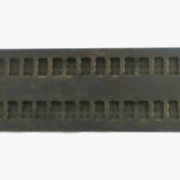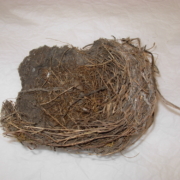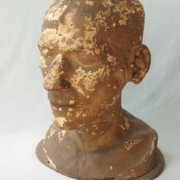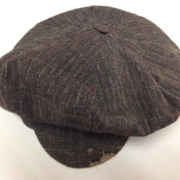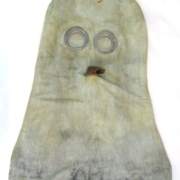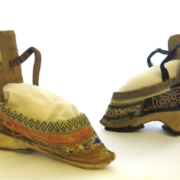Object of the Month – January 2016
January’s Object of the Month is a gold Viking finger-ring. This ring was selected for Object of the Month by Carolyn Wingfield, Curator.
The ring was found by a metal-detectorist near Thaxted in 2013 and reported under the Treasure Act (1996) . It was purchased in 2015 for the museum’s archaeology collections by Saffron Walden Museum Society Ltd, with the assistance of the Arts Council England / Victoria and Albert Museum Purchase Grant Fund and the Headley Trust.


The ring is made in a style associated with Viking jewellery and dates from the tenth to twelfth centuries (around AD 900 – 1200). It was made by twisting two strands of gold wire, and then twisting these with two tapering gold rods, and forming a hoop. The thin ends of the rods and wires were joined at the back of the hoop by beating them together into a flat, diamond-shaped plate. The plate is decorated with tiny punched circles.
The size and weight of the ring suggest that it was most likely worn by a man. It weighs over 32 grams and the metal is over 95% gold, the rest being silver and copper.This was established by X-ray fluorescence analysis at the British Museum’s Department of Conservation and Scientific Research. The ring measures a maximum of 35mm across in its current state.
Viking Rings
This style of ring, made by twisting or plaiting gold wires and rods together, is associated with the Vikings. ‘Vikings’ is the collective name given to people from Scandinavian countries (Denmark, Norway, Sweden) who raided, traded and settled across northern Europe and beyond from the ninth to twelfth centuries.
Many such rings have been found across the Viking world. Illustrated here are two different types of Viking gold ring, both from Essex and both in the collections of the British Museum.

Gold ring formed from twisted rods and wires, West Bergholt, nr. Colchester
Photo: British Museum

Plain gold ring, a form also known as ‘ring money’, Thaxted
Photo: British Museum
Sometimes detail can be important. The diamond-shaped plate on the back of our Thaxted ring is thought to be a Scandinavian feature, because it is also found on rings from the Viking homelands. In other words, it was probably made by a Viking goldsmith in Denmark, Norway or southern Sweden, rather than an Anglo-Saxon smith working for Vikings in eastern England.
We cannot tell who lost the ring, or why. Such objects could easily be traded or passed from one person to another. To the Vikings, such jewellery acted as portable currency and a sign of status. Arm-rings and neck-rings made of gold and silver in the same style are also known.
You can see the ring on display in our Treasure case, in the Ages of Man gallery.



